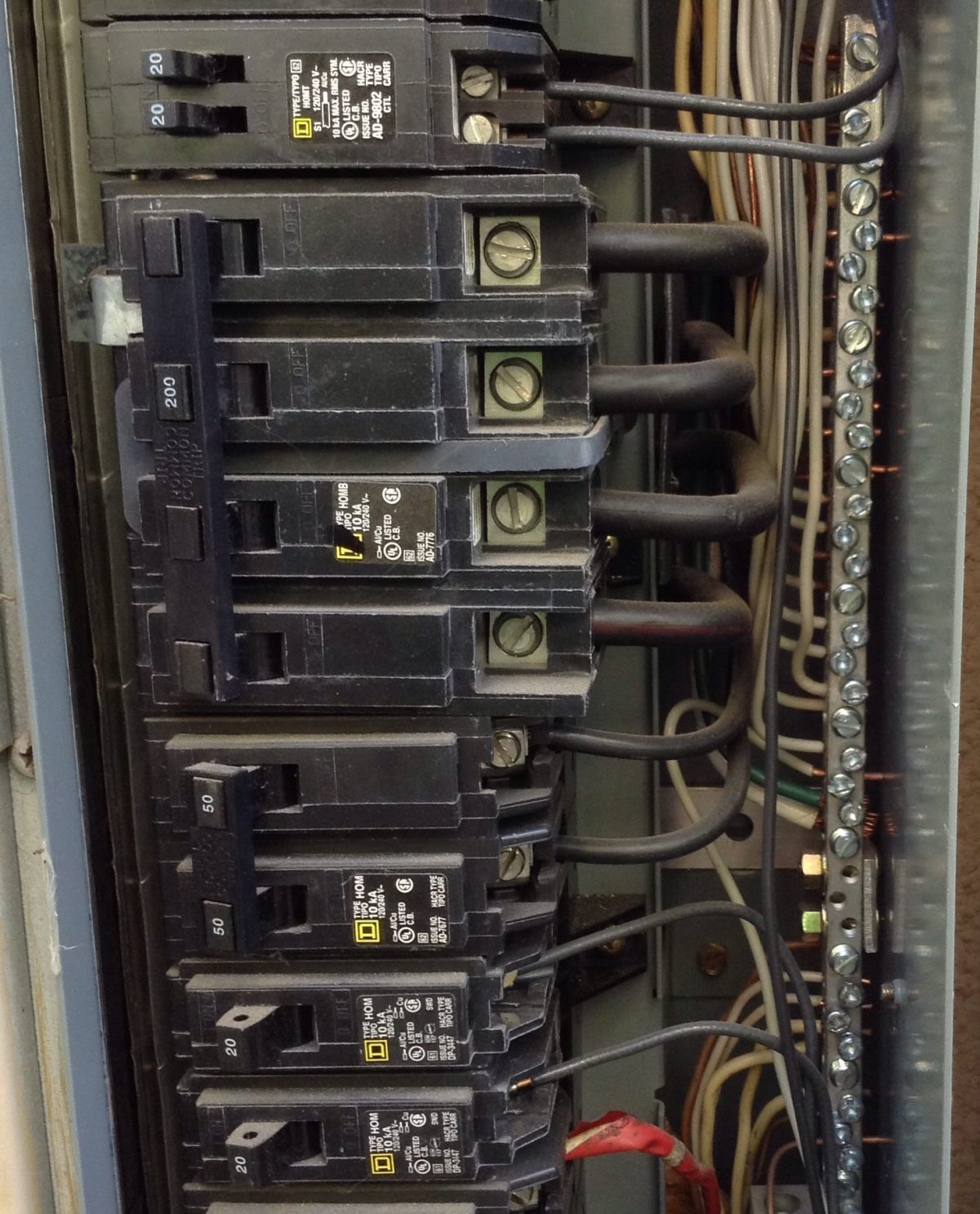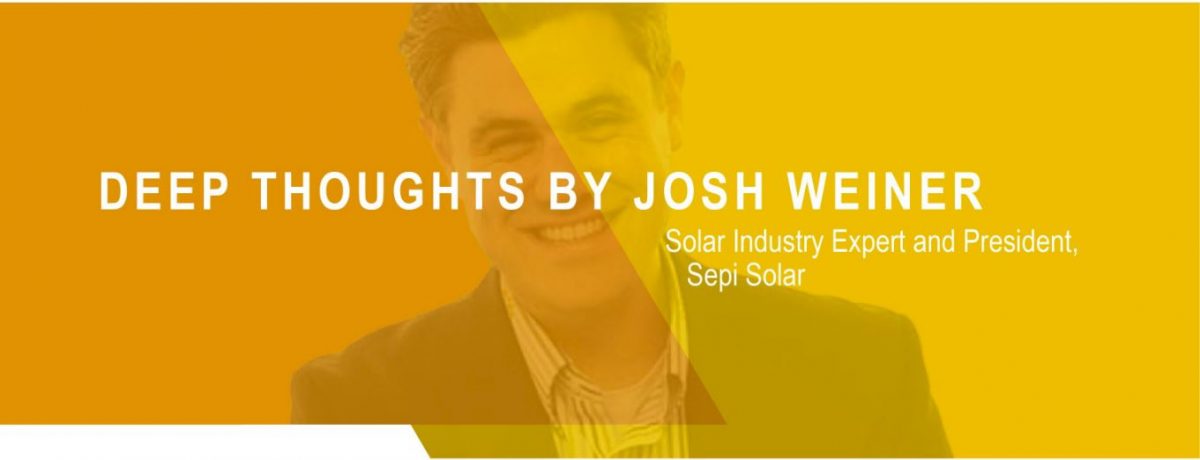This post was written by Josh Weiner, Solar Expert Witness & Solar Engineering Expert. Mr. Weiner has been at the forefront of the solar industry for over 20 years and is an industry leader on solar-plus-storage engineering & design. Josh’s expertise spans both in-front of and behind-the-meter initiatives including residential, commercial, utility, grid-scale, and ev charging solar and storage applications. It’s one of the biggest misconceptions in project design and engineering: Permitting is all about technical compliance. Yes, you have to prove that the electrical system you intend to build satisfies all the codes that protect public safety. But there’s more to it than that. There’s an often-overlooked psychological component involved in the permitting process. Imagine filing a permit application on a paper napkin. If it has all the necessary lines, squares and circles, equipment specifications, locations, and other requisite data, you’d have a complete application. But at least 9 times out of 10, your application would be rejected. And for good reason. Because permitting is not only about code compliance. It’s about building trust and accountability. It’s about convincing the local permitting office that smart people have expertly designed your system for safety and reliability. How do we win permit approvals? To begin with, we follow these five strategies:
Local permitters treat building and electrical codes the way that some people interpret the Bible, or the US Constitution. It’s not enough to size wire by multiplying output current by 125 percent. Instead, show your calculations and cite the latest version of National Electrical Code Article 690 approved in your jurisdiction, as well as any other applicable codes. Spell out all the details so it’s clear that you not only know how to design systems but why the codes are in place to begin with. Plan checkers are going to ask questions. Get ahead of the game by showing them you know what you’re talking about.
Some system designers and engineers have a natural aversion to sharing too much with the permitting authority. As the thinking goes, it’s easier to ask forgiveness than to get permission. That’s not always the best approach. The concern with sharing too much information is that the permitting authority will seize on small details to probe deeper, delaying approval and potentially altering project plans. In our experience, permitters behave according to human nature. If you withhold information, they treat you with suspicion and distrust. If you’re upfront about complexity and nuance as well as your thoughtful solutions, and you show open-mindedness in response to questioning, you gain a measure of respect. This dynamic will carry over to future visits to the permit office. Good representation will improve your reputation with local permitters.
In many cases, SepiSolar customers have contacted us from the service counter during a conversation with a permit officer. It’s like having an on-call technical support hotline. We can answer permitting questions in real time. On more than one occasion, at the conclusion of these conversations, our customers have walked away with approved permits in hand.
Search engines have made everybody seem smarter by putting information at our fingertips, but at the same time our knowledge base has become a mile wide and an inch deep. The same thing is happening to an extent with the UL standards for energy storage systems. People can cite UL 9540, but not the component-level certifications for batteries, inverters and other key products. If you don’t understand the various UL standards, you increase risk in the permitting process. When projects depend on system-level certification, any question that comes up about the test lab used for UL listing, or the test procedures, or anything else, can slow down permitting and add on project costs. On the other hand, applicants who know they have inverters that comply with UL 1741 and batteries that comply with UL 1973 have a fallback plan, so they can hedge against risks in the permitting process.
A lot of solar designers and solar engineers know about the 120 percent rule pertaining to energy generation, but they have no idea about NEC Article 220, which is all about loads and load calculations. Electricians and electrical engineers, on the other hand, know Article 220 like the back of their hand, but not the common solar codes. System integrators today in all segments of the market need to design for systems that can dynamically change modes of operation, ramping up or down, quickly or slowly, staying still, or supplying any number of power applications, such as reactive power and VAR control. System controls have a direct impact on system safety and code compliance. Integrators should understand all the modes of operation and be sure system designs comply with each mode affecting generation and load.
If you would like to reduce risk in the permitting process for your solar and energy storage projects, find out how SepiSolar approaches design and engineering for C+I solar projects and energy storage projects, and send us your project specifications today for a fast and accurate design quote.
Cite codes
Be transparent
Call for backup
Hedge against risk
Channel your inner electrician
Ask us about complete design and engineering services
This post has been contributed by both Josh Weiner, Solar Expert Witness & Solar Engineering Expert and Jim Jenal. Mr. Weiner has been at the forefront of the solar energy industry for over 20 years and is an industry leader on solar-plus-storage engineering & design. Josh’s expertise spans both in-front of and behind-the-meter initiatives including residential, commercial, utility, grid-scale, and ev charging solar and storage applications.
Jim Jenal, Founder & CEO of Run on Sun, is a Pasadena solar installer and integrator who often blogs about the Los Angeles area solar permitting, codes and standards.
***
Sweet Relief – LA County Signs-off on Solar for Center-Fed Service Panels
Due to a misreading of the electrical code, many jurisdictions in the Run on Sun service area – and yeah, we are talking about you, LA County – balked at allowing homeowners to install solar if they were connecting to a center-fed panel. This has resulted in costly, and unnecessary service panel upgrades, and even prevented some homeowners from adding solar at all!
Well, good news – LA County has finally gotten with the program and agreed to interpret the code consistent with the intent of the code’s authors. Here’s the scoop….
We have written about this problem at some length before – you can see those articles about solar and center-fed panels here. The confusion arose because the code calls for connecting the solar breaker to the opposite side of the bus from the main breaker. Since on a center-fed panel the main breaker is in the middle of the bus, there was no “opposite side” to mount the solar breaker, according to that tortured interpretation. (In the photo on the right, you can see the large, main breaker in the center, with load breakers above and below it.)
To get around this problem in jurisdictions that held to that view of the code’s intent, various approaches were brought forward, all of them more dangerous and/or complicated than simply putting a solar breaker at one end of the bus. For example, a couple of years ago, San Diego Gas & Electric introduced an adapter ring to fit between the meter socket and the service meter. Soon thereafter, SCE adopted a similar solution, and that became our “go-to approach” for center-fed panels in LA County.
While County would sign-off on the SCE ring (or Generation Meter Adapter, as SCE called it), it was really an awful solution to the problem For one thing, SCE charged the homeowner just under $500 for the install, and their technician had to do the work in full arc-flash protection gear – a testament to the hazard involved. Beyond that temporary risk, the connection now left a pair of terminals in the solar disconnect with no over-current protection between them and the power pole transformer. Short that connection out, and nothing would stop that current from flowing until the wires melted!
A better solution was recently brought to market in the form of the B3-Bypass breaker which we wrote about last Fall. The B3 fits into center-fed panels and provides a much safer way to interconnect solar than the GMA ring. But guess what? Despite it having passed UL certification, LA County will not accept it, as we learned when we attempted to submit plans calling for the installation of the B3!
So, back to square one? Well not quite. While on the phone with County’s plan checker, I remembered that a code amendment had been passed in January 2017, which clarified the intent of the code when it comes to center-fed panels. We had cited this amendment to L.A. County last year, only to be told that County had not yet approved the amendment – hence we installed multiple GMA rings with center-fed panels last year.
Here’s the language of the amendment:
A connection at either end, but not both ends, of a center-fed panelboard in dwellings shall be permitted where the sum of 125 percent of the power source(s) output circuit current and the rating of the overcurrent device protecting the busbar does not exceed 120 percent of the current rating of the busbar.
This is what we had been saying all along, and the code amendment makes it clear that this is an acceptable thing to do – as well as being cheaper and safer than any of the alternatives.
So, I asked the plan checker, had County gotten any closer to adopting this amendment? “Oh,” said the plan checker, “we’ve been accepting it since January 2017!”
Sigh. So not true. At least none of the plan checkers that we encountered in 2017 were accepting the amendment. And for that matter, this plan checker did not volunteer the information. Instead, he was about to sign-off on the GMA ring without ever bothering to mention that there was a safer and cheaper way for us to meet the needs of our client! Is it too much to ask that a plan checker point out policy changes of which s/he is aware when discussing plans with a contractor?
Here’s the bottom line: If your solar project meets the interconnection requirements set forth in the quoted language above, you do not need to upgrade your panel, and you don’t need a GMA ring to attach solar to your center-fed panel in LA County territory. (And if it satisfies LA County, presumably every other jurisdiction should go along as well.)
If you need documentation – either as a homeowner to provide to your solar contractor who is trying to sell you an unwanted service panel upgrade – or as a solar contractor trying to convince a recalcitrant AHJ – here’s the link to the California Building Standards Bulletin that approves the amendment, and here is Bill Brooks’ write-up explaining the need and justification for the amendment.
Here’s the money quote from the latter:
The fact that several thousand center-fed panels in good repair have required replacement over the past two years when, in fact these upgrades are unnecessary, presents a real and unnecessary hazard to the field workers required to perform these replacements. Any time a service equipment replacement is performed on a dwelling, utility service must be interrupted and significant electrical work must be performed to replace the equipment. This exposes the electrical worker to hazards of potentially live conductors and inadvertent errors that could even be fatal. The hazards of these upgrades is appropriate when the existing service equipment is damaged or has outlived its useful safe operating life. Performing these upgrades on perfectly good equipment that is not a safety hazard to the dwelling is an unnecessary risk.
We couldn’t agree more!
Jim Jenal is the Founder & CEO of Run on Sun, a Pasadena solar installer and integrator. Follow Jim and Run on Sun on Twitter at @RunOnSun.
This post was written by Josh Weiner, Solar Expert Witness & Solar Engineering Expert. Mr. Weiner has been at the forefront of the solar energy industry for over 20 years and is an industry leader on solar-plus-storage engineering & design. Josh’s expertise spans both in-front of and behind-the-meter initiatives including residential, commercial, utility, grid-scale, and ev charging solar and storage applications.
Mercedes has announced the introduction of its residential battery system into the North American market. Click here to read about this.
© 2024 SepiSolar. All rights reserved.





